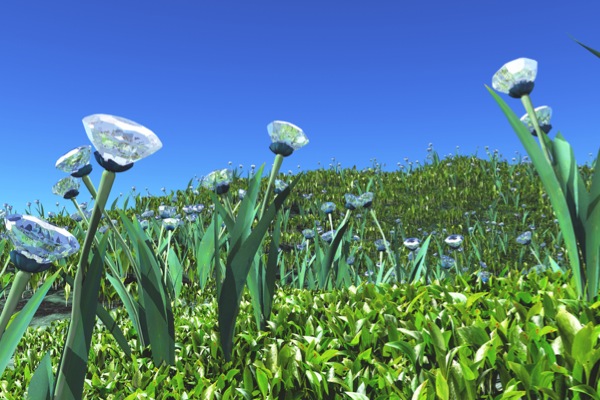
(Image by TaiChesco | Shutterstock.com)
While money doesn’t grow on trees, diamonds might do. Literally. That seems to be the conclusion of a study conducted in Liberia by a scientist at Florida International University (FIU) in Miami, to be published in the June-July issue of the journal Economic Geology.
Stephen Haggerty, who specializes in diamond research, has found a new prickly, palm-like plant that seems to grow only on top of kimberlite pipes — columns of volcanic rock hundreds of meters across that extend deep into Earth, which are the source of most of today’s commercial diamonds.
The plant, identified as Pandanus candelabrum, could become a simple and efficient tool for diamond hunters in West Africa to uncovering potentially rich precious gems and semi-precious gemstones deposits, the paper claims.
Haggerty, who is also chief exploration officer of Youssef Diamond Mining Company (YDMC), with concessions in Liberia, believes the plant has adapted to kimberlite soils, which are rich in magnesium, potassium, and phosphorus.
The scientist, who has worked in the African nation off and on since the late 1970s, has in recent years focused his prospecting efforts in the northwest part of Liberia.
Two years ago he discovered a new kimberlite pipe 500 meters long and 50 meters wide.
Speaking to Science Magazine, Haggerty said the soil above that pipe has already yielded four diamonds: two in the 20-carat range, and two in the 1-carat range.
According to his bio, posted at FIU’s website, he is currently conducting wide-ranging research, which includes from field activities in Brazil, India, South Africa, and West Africa (finger printing “Blood Diamonds”), “to the cosmos, pre-solar diamonds (greater than 4.5 billion years old), and the enigmatic origin of black and porous carbonado-diamond.”
2 Comments
Debuji
Wow !
David Albert
I Had Found This Three “Pandanus Candelabrum” in My Country!